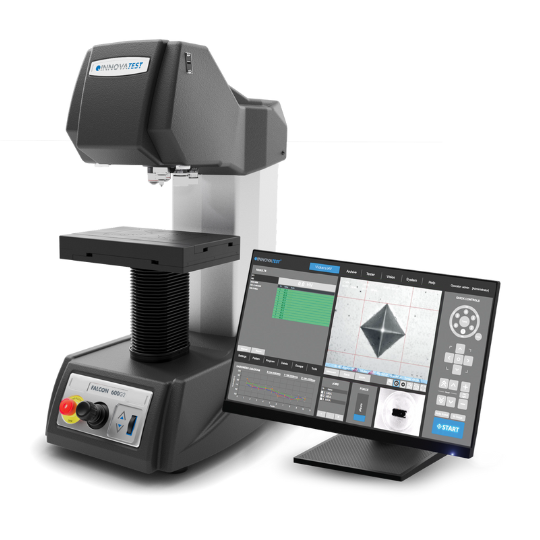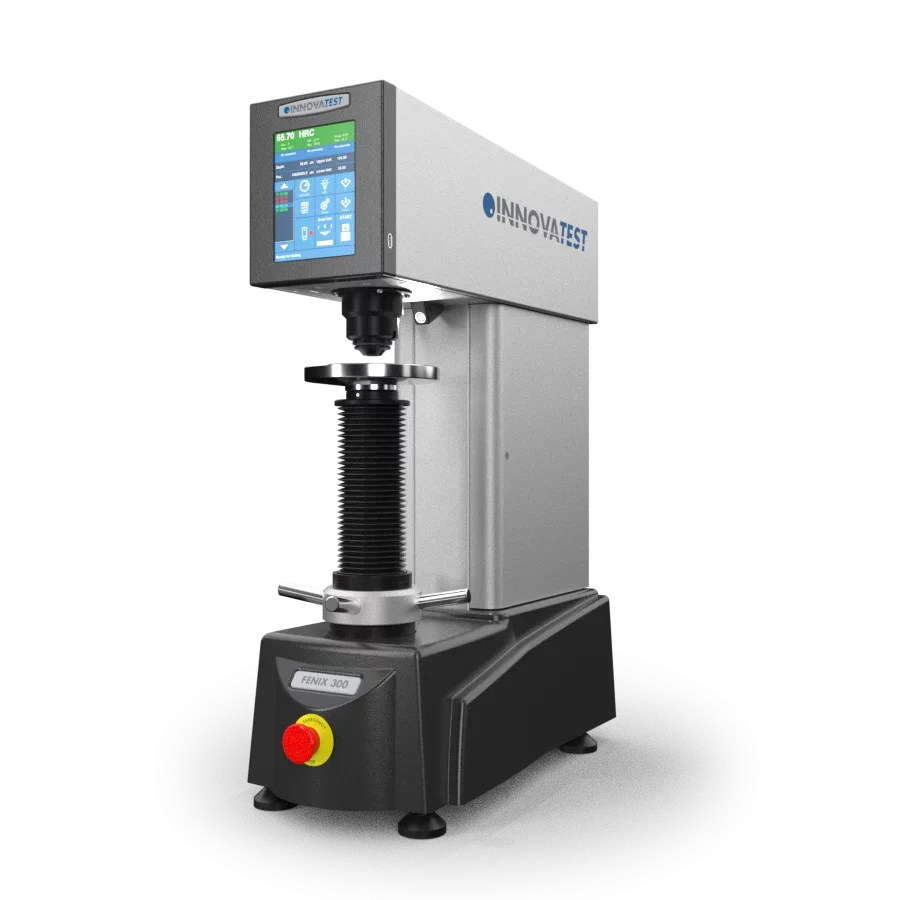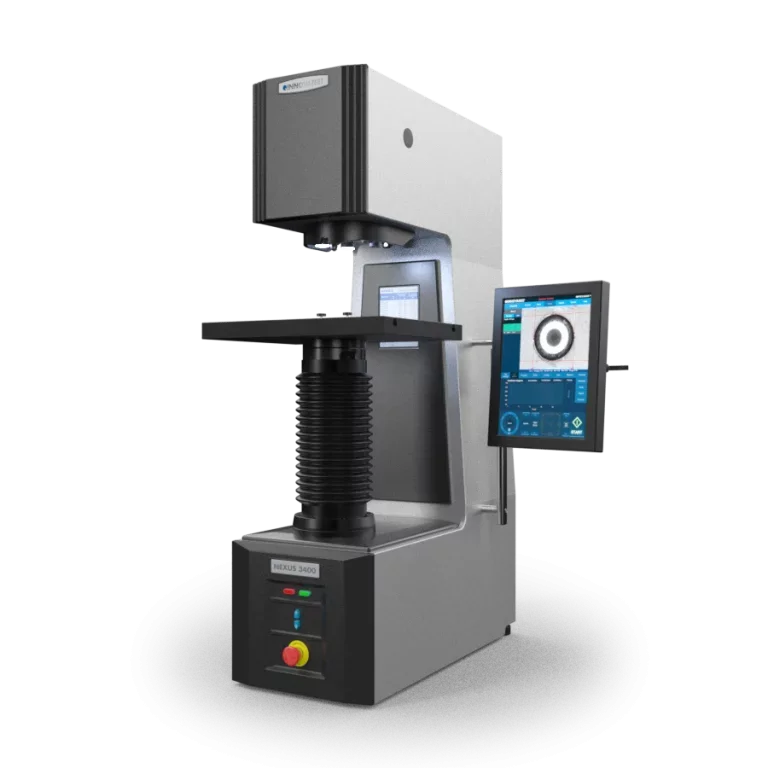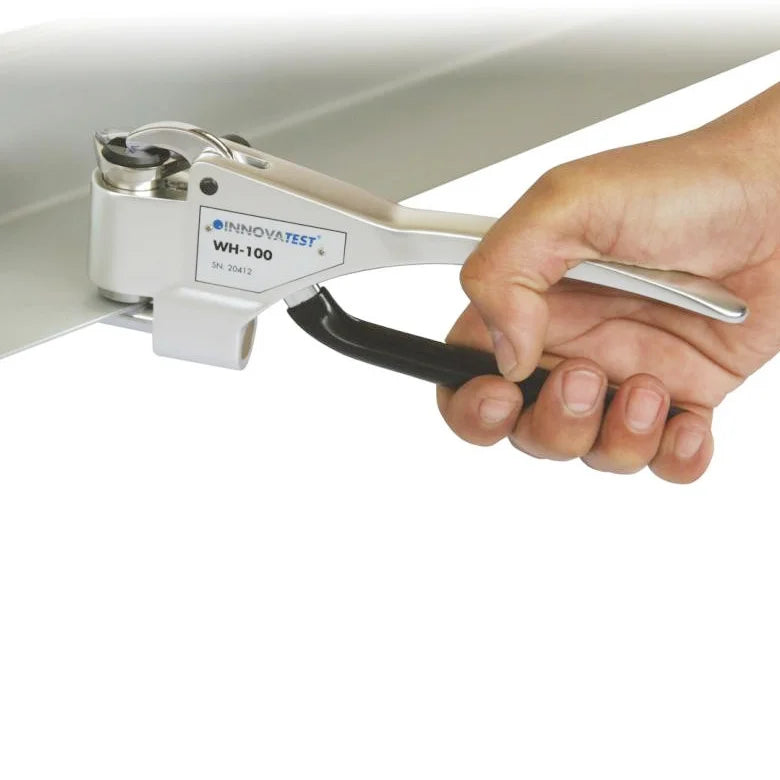
Selecting the right hardness tester is crucial for ensuring accurate and reliable measurements. Whether you are replacing an existing tester or implementing hardness testing for the first time, several factors must be considered to determine the best fit for your needs.
Replacing an Old Hardness Tester?
If you are replacing an old hardness tester, start by evaluating its performance and limitations. Consider the following:
-
Age and reliability: Is the old tester still providing consistent and repeatable results? Is it failing calibration?
-
Test method used: Was the previous tester based on Rockwell, Vickers, Brinell, Knoop, or another method?
-
Obsolescence: Is the old tester still supported with parts and service, or has it become obsolete?
-
Changes in testing requirements: Have the material, specifications, or industry standards evolved since the last tester was purchased?
-
Customer service: Did your previous supplier really give you the support that your team deserves?
Drawing and Specification Requirements
Before selecting a new hardness tester, check the part drawing or specification for the items you need to test. These documents often specify:
-
The test method to be used
-
The required hardness scale (e.g., Rockwell HRC, Vickers HV, Brinell HBW 10/3000)
-
Any industry or company standards that must be followed
-
The acceptance criteria for hardness values
-
Locations of any tests
Part Dimensions & Characteristics
Different parts require a different type of hardness tester. Consider the following:
Size
-
Small parts may require a microhardness tester (Vickers or Knoop) with precise indentation control.
-
Large parts may require a portable hardness tester (Leeb, UCI, or Rockwell) or a bench or floor standing Brinell or Rockwell tester.

Our range of Portable Leeb Hardness Testers work great for larger items that can't fit on a regular benchtop system
Mass
-
Heavy components may not be suitable for small benchtop testers and may require a dedicated floor-standing system or even a portable hardness tester
-
Lightweight components may be tested with a microhardness tester, provided they are securely held in place and may struggle with portable testers
Thickness
-
Thin parts (such as coatings, case-hardened layers, or sheet metals) are best tested using microhardness methods (Vickers or Knoop).
-
Bulk materials can typically be tested using Rockwell or Brinell methods.
Surface Roughness
-
Highly polished surfaces are suitable for Vickers hardness testers and Knoop microhardness testing.
-
Rough surfaces may require surface preparation or a more robust test like Brinell or Rockwell Hardness Tester.
Sample Preparation
-
Some materials and coatings require polishing or etching to ensure a reliable measurement.
-
Poorly prepared surfaces can lead to inaccurate results, particularly for microhardness testing.
Material Type
Certain materials lend themselves to specific hardness tests:
-
Metals: Rockwell, Brinell, and Vickers are commonly used.
-
Polymers and Rubbers: Shore hardness tests (Shore A, Shore D) are suitable.
-
Ceramics: Vickers or Knoop testing is often preferred due to the brittle nature of the material.
-
Composites: May require specialized methods depending on the material composition, often based around the Rockwell test method.
Typical Hardness Range
The hardness range of the material determines the suitable test method:
-
Soft materials (e.g., lead, aluminum): Consider Brinell with (F/d² ratio of 5 or 10), Vickers, Rockwell HRE
-
Medium hardness materials (e.g., mild steel): Possibly Rockwell HRB, Vickers or Brinell (F/d² ratio of 15 or 30).
-
Hard materials (e.g., hardened steel, ceramics): Rockwell HRC, Vickers, Micro-Vickers Knoop or Brinell (F/d² ratio of 30).
Automation Required?
Depending on the testing volume and precision required, different automation levels are available:
-
Manual: Suitable for low-volume testing with maximum operator interaction.
-
Semi-automatic: Might include automatic indentation measurement but could require the operator to manually move an XY stage
-
Fully automatic: Automatic measurement and movement is ideal for high-throughput environments, reducing operator involvement, improving repeatability and reducing measurement uncertainty.
The Falcon 600 Automatic Vickers Hardness Tester offers a great solution for automatic testing
Testing Location: Laboratory, Shop Floor, or Off-Site?
-
Laboratory Testing: Ensures controlled conditions and high precision, ideal for research and development.
-
Shop Floor Testing: Requires robust testers resistant to dust, vibrations, and temperature fluctuations.
-
Off-Site Testing: Portable testers (e.g., Leeb, UCI) allow hardness measurements in the field.
Number of Tests per Sample
-
Single test per sample: Suitable for homogeneous materials with minimal variability.
-
Multiple tests per sample: Required for case-hardened materials, coatings, or composites with varying hardness profiles as well as testing welds.
Batch Size
-
Low volume testing: Manual or semi-automatic testers may suffice.
-
High volume testing: Requires automated systems to improve efficiency and consistency. You can benefit from multiple sample holders.
What Happens After Your Test?
-
Quality Control: Ensure compliance with specifications.
-
Process Monitoring: Detect variations in manufacturing processes.
-
Failure Analysis: Investigate material defects or deviations.
-
Data Logging and Reporting: Modern testers can store and export data for statistical analysis and traceability.
-
Create Reports: Does your machine need to be able to produce professional looking reports, quickly and easily?
Conclusion
Choosing the right hardness tester depends on multiple factors, including material, part characteristics, testing environment, and required accuracy. Understanding these aspects ensures you select a tester that meets your operational and compliance needs while optimizing efficiency and reliability.
Need personalised advice on which new hardness tester to get? Contact us at sales@innovatest-uk.com





